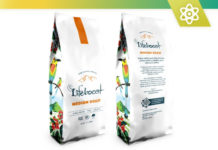Strength training is an indispensable component of a well-rounded fitness program. It provides a multitude of benefits that extend beyond mere muscle hypertrophy. From enhancing metabolic health to fortifying bone density, the virtues of lifting weights are profound and manifold. However, to maximize these benefits, following a structured and evidence-based approach is crucial. This guide aims to provide an exhaustive resource on optimizing your strength training routine, ensuring that each workout is practical and sustainable in the long run.
Understanding the Foundations of Strength Training
Before delving into the specifics of enhancing your routine, it is vital to comprehend the foundational principles of strength training. Strength training involves the body's response to resistance, whether through free weights, machines, or bodyweight exercises. The primary objective is to induce muscular fatigue, prompting the body to adapt by becoming more robust and resilient.
The Science of Muscle Hypertrophy
Muscle hypertrophy is the increase in muscle size resulting from resistance training, characterized by the enlargement of muscle fibers. This process is triggered by mechanical tension, muscle damage, and metabolic stress. Each of these factors contributes uniquely to muscle growth:
- Mechanical Tension: This is the force generated by muscles during contraction. Heavier weights produce more mechanical tension.
- Muscle Damage: Micro-tears that occur in muscle fibers during intensive lifting sessions. These tears repair over time, leading to increased muscle size.
- Metabolic Stress: The accumulation of metabolic byproducts (such as lactate) during high-intensity workouts, contributing to muscle growth.
Principles of Progressive Overload
For muscles to adapt and grow, they must be subjected to a stimulus beyond what they are accustomed to. This principle, known as progressive overload, can be achieved by increasing the weight lifted, the number of repetitions performed, or the total volume of work over time. Consistently applying progressive overload is key to continuous improvement.
Importance of Recovery
Recovery is equally crucial to the muscle-building process. After being stressed during workouts, muscles need time to heal and grow. Adequate rest, nutrition, and sleep are essential to an effective recovery strategy.
Crafting an Effective Strength Training Program
Designing an effective strength training program involves careful consideration of several variables: exercise selection, training frequency, volume, intensity, and rest intervals. Tailoring these variables to fit individual goals and circumstances will maximize the program's effectiveness.
Exercise Selection
Choosing the right exercises is fundamental to a well-rounded routine. A balanced program should include a mix of compound movements, which engage multiple muscle groups, and isolation exercises, which target specific muscles. Key compound exercises include squats, deadlifts, bench presses, and rows. These exercises are highly effective for building overall strength and muscle mass.
Frequency and Split Routines
Training frequency refers to the number of times a muscle group is worked per week. Research suggests that training each muscle group twice weekly can be more effective for hypertrophy than training it once weekly. Split routines, where different muscle groups are trained on other days, can help manage workload and prevent overtraining.
Volume and Intensity
Volume is the total work performed in a training session or over a week, typically measured in sets and repetitions. Intensity refers to the load relative to one's maximum capacity. Both volume and intensity must be balanced to ensure progressive overload without leading to overtraining.
Rest Intervals
Rest intervals between sets are vital for performance and recovery during a workout. Shorter rest periods (30-60 seconds) can induce more metabolic stress, while longer rest periods (2-3 minutes) allow for greater mechanical tension and better performance in subsequent sets.
Practical Strategies to Enhance Workout Intensity
While foundational principles set the stage, specific strategies can optimize workout intensity and effectiveness. The following techniques can be incorporated into your routine to push past plateaus and stimulate new growth.
Supersets and Circuit Training
Supersets involve performing two exercises back-to-back with minimal rest. This method increases time under tension and saves time during workouts. Circuit training combines multiple exercises targeting different muscle groups in sequence and can enhance cardiovascular conditioning alongside strength training.
Drop Sets
Drop sets involve completing an exercise to failure, then reducing the weight and continuing for additional repetitions. This technique enhances metabolic stress and can lead to significant muscle hypertrophy.
Timed Repetitions
Timed repetitions, or “time under tension,” emphasize the duration of each repetition, often extending the eccentric (lowering) phase. This method increases muscle damage and promotes hypertrophy.
High-Intensity Interval Training (HIIT)
Incorporating HIIT into your routine can improve cardiovascular fitness and aid in fat loss, providing a well-rounded approach to overall wellness. HIIT sessions typically involve short bursts of intense exercise followed by rest or low-intensity periods.
For more ideas on increasing workout intensity, check out BarBend.
Nutrition: The Cornerstone of Strength and Recovery
An optimal diet is indispensable for fueling workouts, promoting recovery, and supporting muscle growth. Proper nutrition ensures the body has the necessary building blocks to repair and grow muscle tissue.
Protein Intake
Protein is the essential macronutrient for muscle repair and growth. Aim to consume 1.2 to 1.6 grams of protein per kilogram of body weight per day. High-quality protein sources include lean meats, dairy, eggs, legumes, and plant-based options like tofu and tempeh.
Learn more about how to build strength with nutrition on Healthline.
Carbohydrates and Fats
Carbohydrates are the primary energy source for high-intensity exercise. Complex carbohydrates like whole grains, fruits, and vegetables provide sustained energy and essential nutrients. Healthy fats in nuts, seeds, avocados, and fish support hormone production and overall health.
Hydration
Staying hydrated is often overlooked but is critical for optimal performance and recovery. Dehydration can impair strength, endurance, and cognitive function. Aim to drink water regularly throughout the day and more during intense workout sessions.
Supplements
While whole foods should be the foundation of your nutrition plan, certain supplements can support your strength training goals. Commonly used supplements include whey protein, creatine, and branched-chain amino acids (BCAAs). It's essential to consult with a healthcare professional before starting any supplement regimen.
Mental Strategies for Sustaining Motivation
One of the biggest challenges in strength training is maintaining motivation over the long term. Employing mental strategies can help you stay committed and enjoy the process.
Setting Realistic Goals
Setting SMART goals (Specific, Measurable, Achievable, Relevant, Time-bound) can provide direction and motivation. Break down larger goals into smaller, manageable milestones to maintain a sense of achievement and progress.
Tracking Progress
Keeping a workout journal or using fitness apps to track progress can provide valuable feedback and highlight improvements over time. Seeing tangible results can boost motivation and adherence to the program.
Embracing Competition
Competition can be a powerful motivator. Whether competing against yourself, aiming to beat personal records, or engaging in friendly rivalry with a workout partner, competition pushes you to give your best effort.
For more insights on fostering a competitive spirit, read this article from NBC News.
Enjoying the Process
Remember that strength training should be enjoyable. Choose exercises and routines that you find engaging and rewarding. Incorporating variety and trying new workouts can keep things fresh and exciting.
Importance of Form and Technique
Proper form and technique are paramount in preventing injuries and ensuring the effectiveness of each exercise. Lifting with incorrect form can lead to muscle imbalances, joint issues, and other chronic conditions.
Learning from Professionals
If you’re new to strength training, consider working with a certified personal trainer to learn the proper techniques. Many gyms offer introductory sessions or ongoing training packages to help you get started.
Using Mirrors and Videos
Mirrors in the gym can monitor your form during exercises. Recording and reviewing your workouts can also help identify areas for improvement. Numerous online resources and instructional videos can also guide you.
Listening to Your Body
Pay attention to how your body feels during and after workouts. Pain, exceptionally sharp or chronic, can indicate poor form or overtraining. Don’t hesitate to take a break or consult a healthcare professional.
Incorporating Functional Training
Functional training focuses on exercises that improve your ability to perform everyday activities. This type of training enhances coordination, stability, and mobility, complementing traditional strength training.
Core Stability
A strong core is essential for overall strength and injury prevention. Incorporate core exercises such as planks, Russian twists, and leg raises into your routine. These exercises improve stability and support the spine during heavy lifts.
Mobility and Flexibility
Incorporating mobility and flexibility exercises can enhance performance and reduce the risk of injury. Dynamic stretching before workouts and static stretching after workouts can improve range of motion and muscle function.
Balance and Coordination
Exercises challenging balance and coordination, such as single-leg squats or Bosu ball exercises, can improve neuromuscular control and functional strength. These exercises also engage stabilizer muscles often overlooked in traditional strength training.
Conclusion
Optimizing your strength training routine requires a comprehensive approach that encompasses the physical aspects of training and nutrition, recovery, mental strategies, and proper technique. By incorporating these principles and methods, you can maximize your gains, reduce the risk of injury, and sustain your motivation over the long term.
Strength training is not just about lifting heavy weights but about building a more substantial, healthier, and more resilient body. Embrace the journey, celebrate your progress, and enjoy the benefits of a well-structured strength training routine. Happy training!













![Bowflex Max Total: 2024 Fitness Workout Exercise Machine [Review] Bowflex Max Total: 2020 Equipment Review For Complete Upper and Lower Body Workout](https://www.advancedliving.com/wp-content/uploads/2019/12/Bowflex-Max-Total-218x150.jpg)


